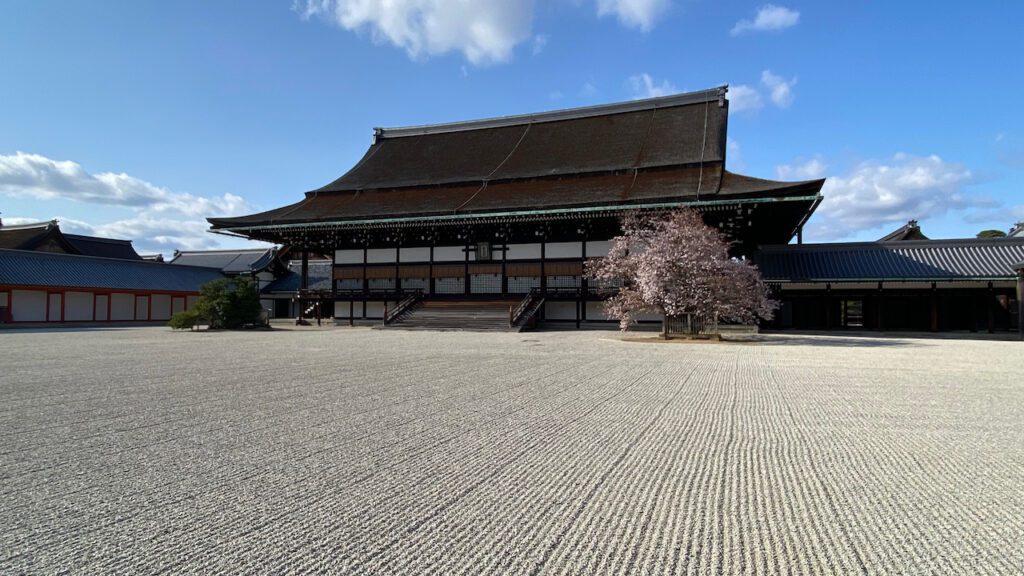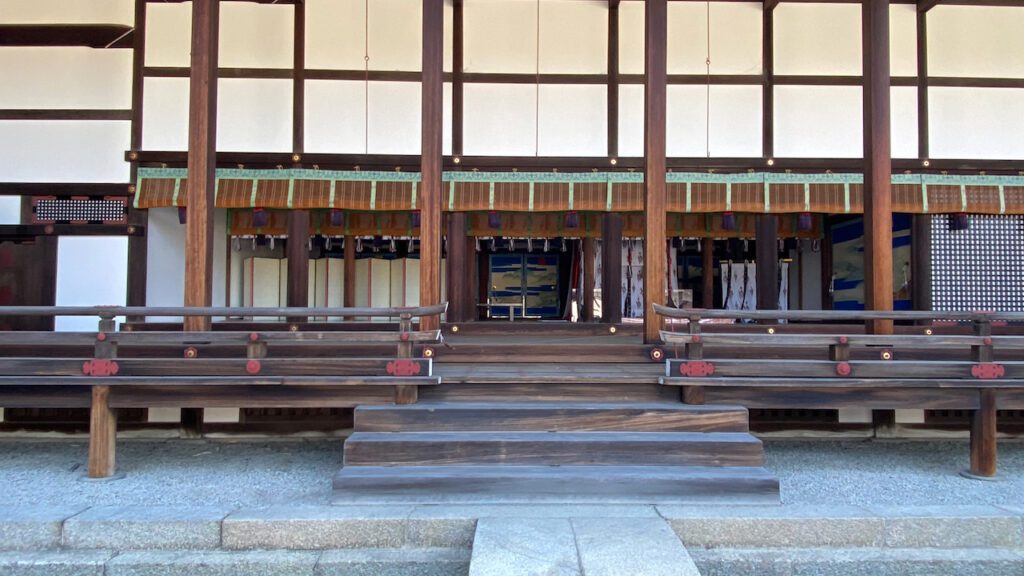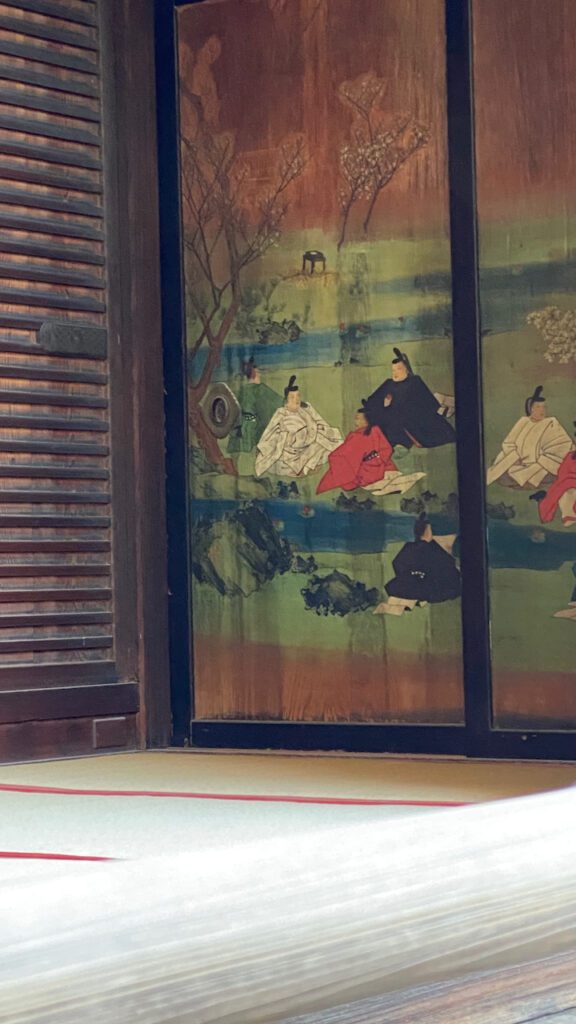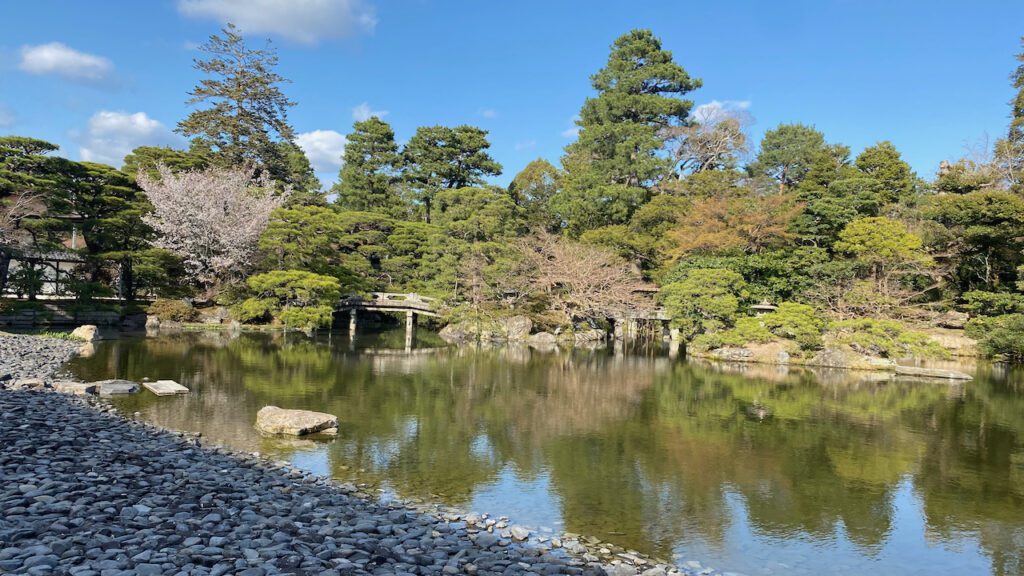Will it ever happen?
The Imperial Palace in Kyoto is now open to the public. After we enjoyed the cherry blossoms in the outer garden, three of us in kimono went into the entrance gate to take a tour of the inner side of the palace.

The main building is called Shishinden 紫宸殿, where formal rituals were held. When we visited, the cherry tree on the right side of the building was in full bloom. The tree is called “Sakon no Sakura 左近の桜 (the cherry on the left side).” Why left? Because the tree is on his left when the emperor looks out from inside the building.

The tour doesn’t allow us to go into the building, but you can look inside from the pathway.


Compared with the flamboyant palaces in European countries like Versailles, the interior of this palace is quite simple. Pictures are painted on the sliding doors here and there.

You can walk through the private garden where past emperors used to spend time. The serene scenery that changes colors according to the seasons must have offered the emperors an opportunity to be reflective from time to time.
Kyoto became Japan’s capital when the emperor Kammu (737 – 806) moved there in 794, and it remained so for over 1000 years until 1869.
The emperor used to be the ruler of the country in the early days. The ruling power moved to the samurai clans in the 12th century. Minamoto Clan (12th – 14th C), Hojo (14th – 15th C), Ashikaga (15th – 16th C), and Tokugawa Clan (17th – 19th C)… While the rulers changed hands, Japan’s emperors remained as the ritual figurehead and kept their residency in Kyoto.
When Tokugawa Ieyasu unified the country after a century of civil wars, he built his own castle in Edo and began to rule Japan from there. Ieyasu, however, never dethroned the emperor nor moved the emperor from Kyoto. The lineage of emperors continued to reside in the palace in Kyoto.
Then the Meiji Government took over in 1868. By then, Edo was practically the center of Japan economically and politically. The newly formed government changed the name of the city from Edo to Tokyo 東京, which literally means the eastern capital, and also moved the emperor from Kyoto to Tokyo. As the new residence of the emperor, people regarded Tokyo as Japan’s new capital.
Many people in Kyoto, however, think that the emperor is away from Kyoto only temporarily. The imperial palace in Kyoto is maintained as a place for special rituals. Not only that, many people believe that the facilities are waiting for the master to return eventually.
Will the emperor ever return to Kyoto permanently? Who knows. After having hosted the emperor for over 1000 years, many people in Kyoto think that 150 years is too short to justify Tokyo as the new capital.
